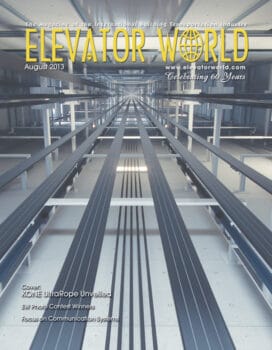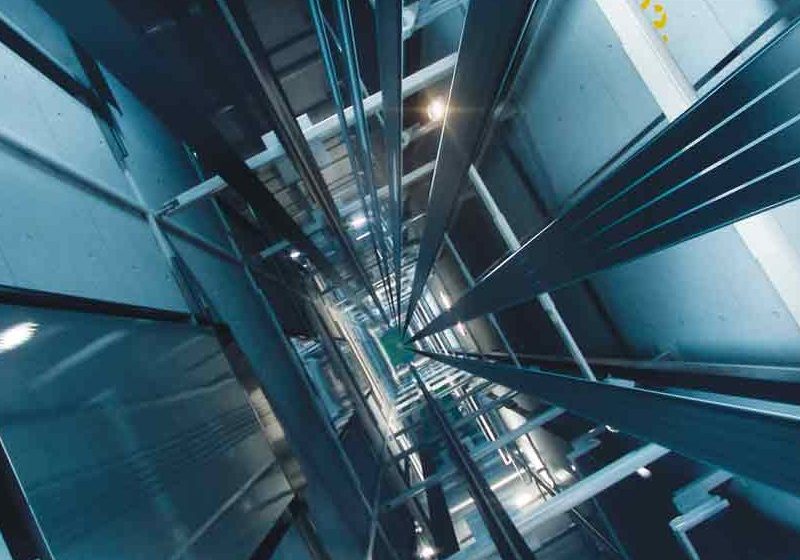Elevators contain numerous components that function in every possible way and location, and are monitored by various answering services. However, ESRM Communications, LLC realized two years ago that parts of the elevator community had not yet embraced the requirements of the most recent American Society of Mechanical Engineers (ASME) code concerning two-way communication devices. To address this issue, ESRM formed the monitoring/call center, comprised of equipment on the market that meets specifications. Equipment installed in new elevators meets or exceeds the new code requirements. The maintenance, monitoring and handling of the calls, however, is a different story.
I could swap phone war stories all day, as I have pushed the “Phone” buttons and been connected to everyone but Dial-a-Prayer. I have had owners argue that they wanted to drive to the building and make sure someone was really trapped or in need of assistance. I have been connected to elevator-company secretaries, dispatchers and even elevator-company owners’ cell phones. All of these choices are deemed within the “rules,” as long as they are designated as authorized personnel by the owner. It is up to the owners to ensure authorized personnel actually conduct their required tasks. The code is very specific about how the phone is to be answered, how calls and passengers are to be treated, and how the phones are automatically tested and inspected periodically.
Let’s take a short tour through the code and look at just what is required of the modern emergency two-way communication device in the world of elevators. There simply is no “gray area” here.
Elevator telephones have changed significantly over the past few years. Our code has evolved from no phone, through standard telephone on the wall, through telephone in a box, through many types of automatic dialing, single push-button devices, to a very specific, required, two-way communication device that can be used reliably by all elevator passengers in an emergency situation.
The hardware required by our code bears little resemblance to the princess or wall-mounted telephone of the past. It is probably incorporated into the car-operating panel (COP) and is obvious only by the “Phone” button and adjacent instructions. Or, it may be a surface-mounted red box with a speaker and “Phone” button prominently set on the face, adjacent to the COP.
When this communication device is properly monitored, nearly every elevator passenger on the planet can rest assured that the result of pushing the “Phone” button in the elevator will be help. It doesn’t matter what language you speak, or even if you can speak. The result is real, live, qualified assistance. Here’s how it happens:
- The “Phone” button in the elevator is pushed.
- A specially trained operator answers the call.
- The operator is automatically apprised of the address of the building housing the elevator.
- The operator initiates the visual indicator adjacent to the “Phone” label.
- The operator attempts to establish conversation with whoever pushed the button and determine the problem.
- The operator reacts appropriately to the conversation by sending help.
- If the operator does not establish two-way communication, he or she assumes the worst and calls fire/rescue.
Requirements in the Latest A17.1 2010 Code
2.27.1.1.1
A two-way communications means between the car and a location staffed by authorized personnel shall be provided. This requirement for an authorized person to answer the phone is often misunderstood or overlooked altogether. This authorized person, trained to respond to a simple button push, is key to the system. All the technology fails without the right human element in the chain. As with all “authorized personnel,” the owner’s designation must be on file.
2.27.1.1.2
(a) Two-way communications shall be directed to a location(s) staffed by authorized personnel who can take appropriate action.
(b) If the call is not acknowledged [2.27.1.1.3(c)] within 45 s., the call shall be automatically directed to an alternate on- or off-site location.
The operator’s prompt, proper response can save a life, but even if the operator fails to answer the call, there is a provision in the code. It concerns me that the response to this call diversion isn’t clearly defined, but at least some semblance of continuity is maintained. At any rate, if you are normally connected to a listed emergency answering service, there will be no need for diverting the call. The service will answer and know what to do.
2.27.1.1.3(c)
A visual indication on the same panel as the “Phone” push button shall be provided – that is, activated by authorized personnel – to acknowledge that a two-way communications link has been established. The visual indication shall be extinguished when the two-way communication link is terminated.
When the operator answers the call, he or she identifies the elevator location, activates the light in the emergency telephone, then commences two-way communication. This light must be controlled by the operator. It is the only reassurance to hearing-impaired passengers that they are indeed communicating with a live operator.
2.27.1.1.3(f)
The two-way communications, once established, shall be disconnected only when authorized personnel outside the car terminate the call.
The person in the elevator cannot terminate the call. “Authorized personnel” are trained to summon help and will try to reassure the passenger and contribute to his or her ease. The passenger, on the other hand, is probably distressed and may randomly be pushing buttons, which could even cause an inadvertent disconnect.
Conclusion
Our code requires that the telephone be tested once a year. We all know that code requirements are minimum standards; I suggest this is entirely inadequate. Even if a line verifier is installed, I recommend that the maintenance company be instructed to push the button as part of its monthly regimen, and the owner push the button and talk to an operator at least once a month. You can also direct the monitoring company to call in to the telephone regularly. They probably do this already, but instructions in writing are helpful.
This, no doubt, sounds excessive. Maybe it is, but on the other hand, failure of the device and the support system is not an option. The passenger pushed that button and started a lifesaving procedure. We have to respond or bear the consequences when we fail.
Get more of Elevator World. Sign up for our free e-newsletter.








